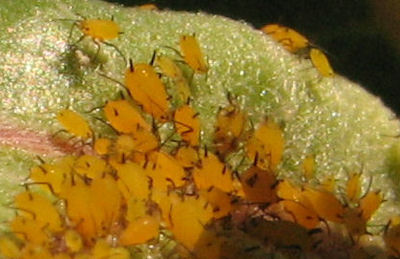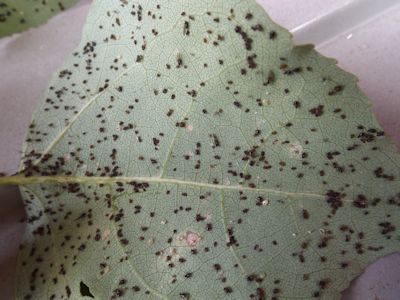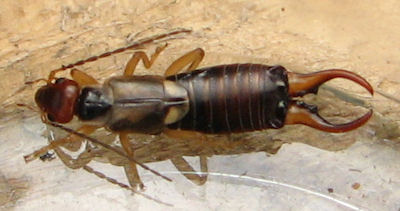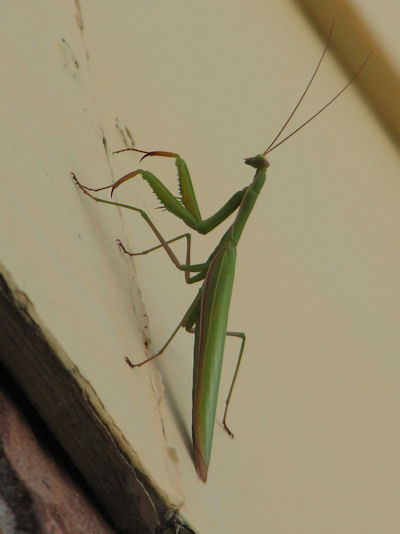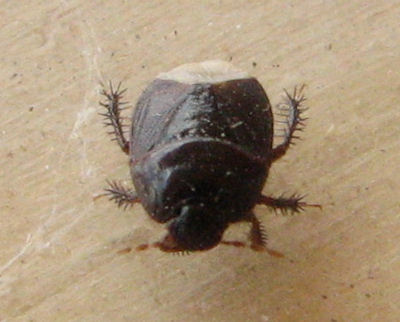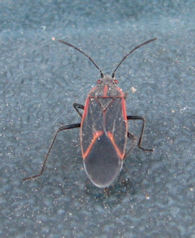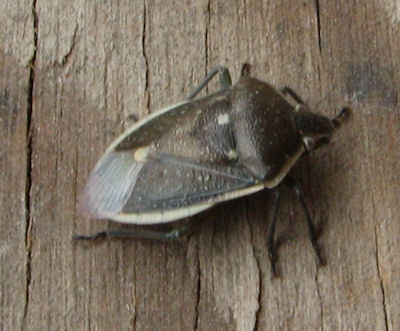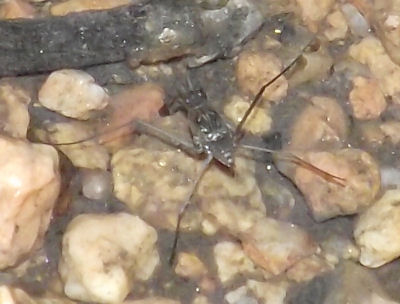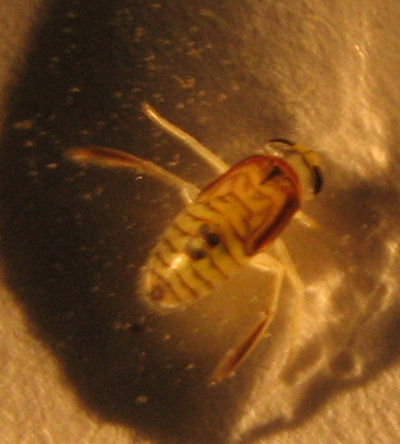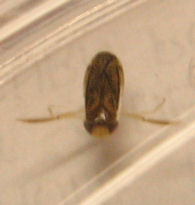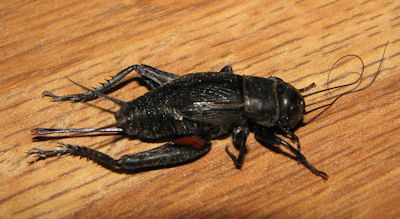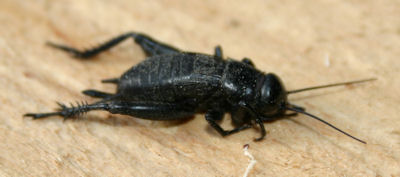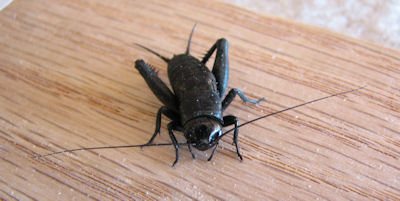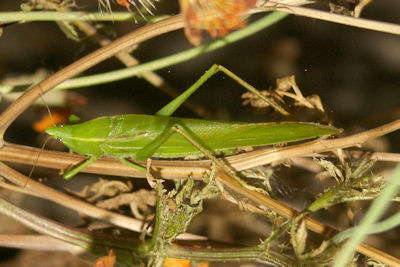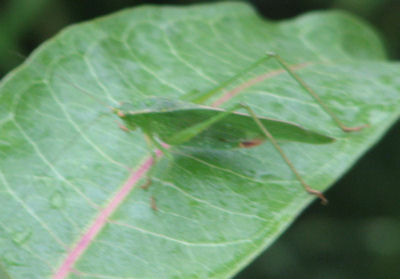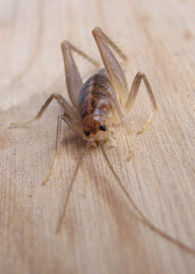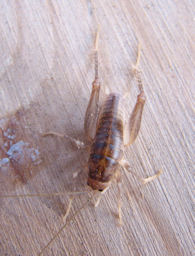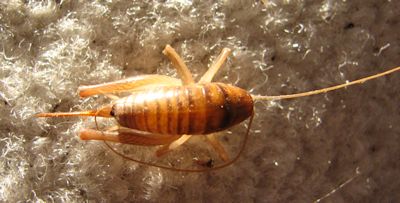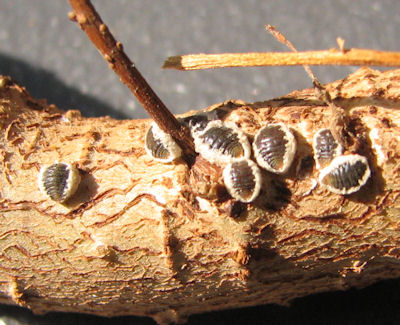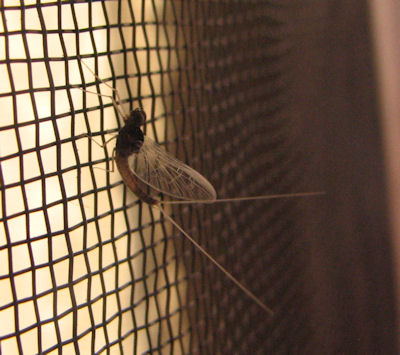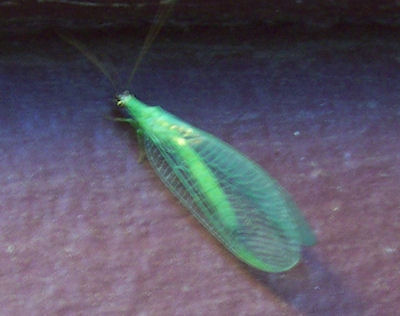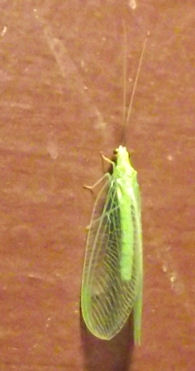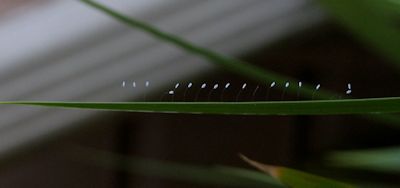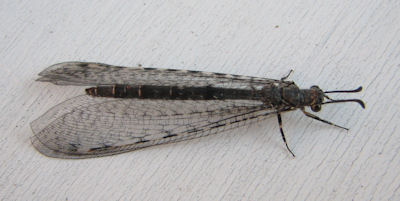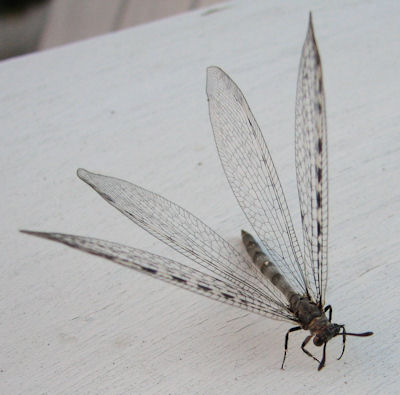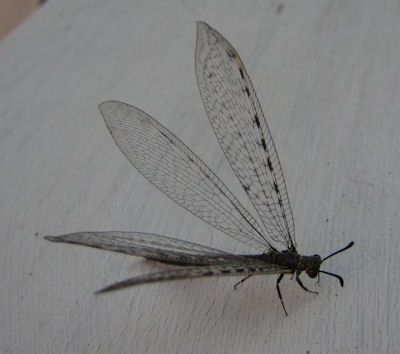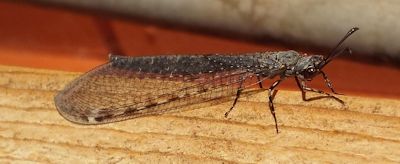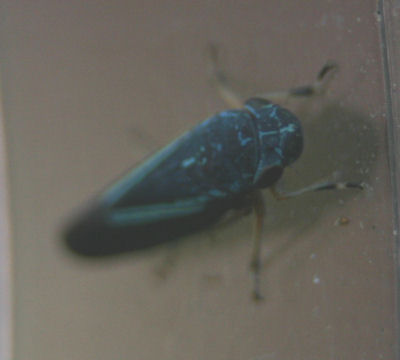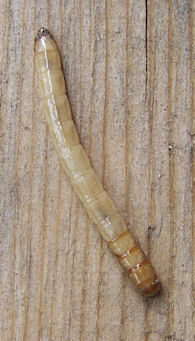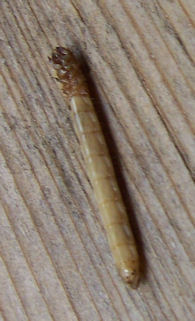This page has gotten so large that I am putting some of them into parts:
Order Leptidoptera, Butterflies and Moths
Order Coleoptera, Beetles
Order Odonata, Dragonflies & Damselflies
Order Diptera, Flies
Order Hymenoptera, Ants, Bees and Wasps
| This page is for the rest of the orders:
Order Hemiptera (True bugs):
Family Lygaeidae. Seed bugs, Cinch bugs, etc
Family Aphididae. Aphids.
Family Cicadellidae Leafhoppers
Family Coreidae Leaffooted Bugs.
Family Corixidae Water boatman
Family Cydnidae Burrowing Bugs
Family Eriococcidae Scale insects.
Family Gerridae Water Striders
Family Pentatomidae Stink bugs
Family Reduviidae Assassin bugs
Family Rhopalidae. Scentless plant bugs
Order Dermaptera (Earwigs):
Family Forficulidae. Earwigs.
Order Orthoptera (Grasshoppers, Crickets, etc)
Family Acrididae Locusts and most grasshoppers
Family Gryllidae Crickets
Family Rhaphidophoridae. Camel Crickets, etc
Family Tettigoniidea. Katydids
Order Thysanura
Family Lepismatidae. Silverfish.
Order Mantodea
Family Mantidae Praying mantis
Order Neuroptera
Family Myrmeleontidae Antlions
Family Chrysopidae Lacewings
Order Ephemeroptera (Mayflies)
Family Baetidae Small minnow Mayflies
|
| A Common Silverfish. Found in my garage 6 October 2008. About 9mm long.
These insects are found in this form in the fossil record for up to about 300 million years.
According to Wikipedia, they can live for up to a year without eating, in extreme cases.
The third picture is of another one, about 5mm in size, caught 18 January 2009 in our bathroom.
Kingdom: Animalia
Phylum: Arthropoda
Class: Insecta
Order: Thysanura
Family: Lepismatidae
Genus: Lepisma
Species saccharina (Common Silverfish)
| 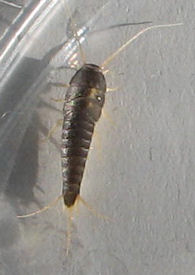
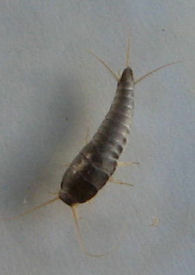
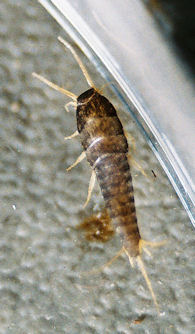
|
| Termites. The body is about 4mm in length, and the wings add at
least that much more. These were coming up from under my driveway in great numbers,
many hundreds, on 28 March 2009. The ones in this picture were coming out from the
gap between my driveway and the bottom of the frame around my garage door.
The temperature was 48 degrees F, but this side of the house was in the sun, so they
would have been warmer than 48.
The second picture (part of the original image) shows 3 specimens of a different
form of the termite. Same species, but light in color, and no wings.
One of the experts on
bugguide.net/node/view/15740 said: These are definately reproductive king and queen termites.
I can't I.D. which species, or family for that matter.
As for the dark individuals without wings, they are quite delicate
and fall off fairly easily. The three whitish colored individuals
in the other image, at about mid-right, are workers I believe.
Soldiers in some of the families have large jaws for defense of the colony.
Some are able to exude noxious fluids in defense, while others
have overly large heads to block openings in tunnels and nests.
Kingdom: Animalia
Phylum: Arthropoda
Class: Insecta
Subclass: Pterygota
Infraclass: Neoptera
Superorder: Dictyoptera
Order: Isoptera
| 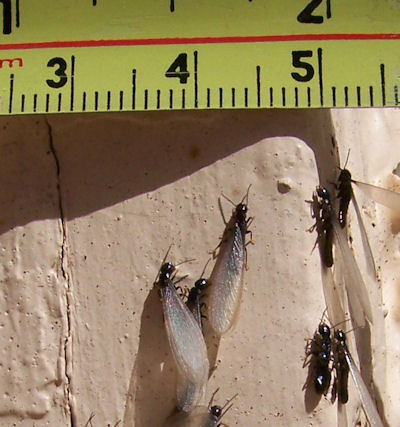

|
| This a Large Milkweed Bug.
The picture was taken at the Fountain Creek Nature Center south of Colorado Springs, CO on 30 July 2008.
These insects retain some of the toxic substances found in the Milkweed plant (Asclepias syriaca).
As a result, the insect itself becomes toxic, and most predators will leave them alone.
There are at least two other species of Milkweed Bugs within this Genera.
The second picture tas taken at the same place on 9 August 2008, and shows
a male and a female mating.
The third pictures was taken at the same place, on 16 June 2011.
Kingdom: Animalia
Phylum: Arthropoda
Class: Insecta
Order: Hemiptera
Family: Lygaeidae
Genus: Oncopeltus
Species: fasciatus
| 
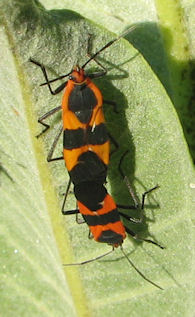
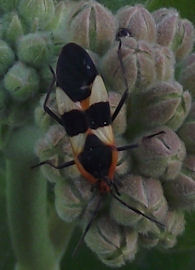
|
| These are some nymphs of the Large Milkweed bug.
This picture was taken on 26 July 2010 at the Fountain Creek Nature Center.
| 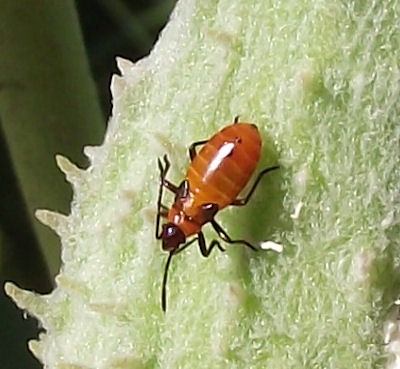
|
| This a Small Milkweed Bug.
The picture was taken at the Fountain Creek Nature Center south of Colorado Springs, CO on 9 August 2008.
These insects retain some of the toxic substances found in the Milkweed plant (Asclepias syriaca).
As a result, the insect itself becomes toxic, and most predators will leave them alone.
The second picture is of male and female Small Milkweed Bugs, 31 Aug 2008.
The third picture is of another Small Milkweed Bug, 26 November 2008 in Colorado Springs.
Kingdom: Animalia
Phylum: Arthropoda
Class: Insecta
Order: Hemiptera
Family: Lygaeidae
Genus: Lygaeus
Species: kalmii (Small Milkweed Bug)
| 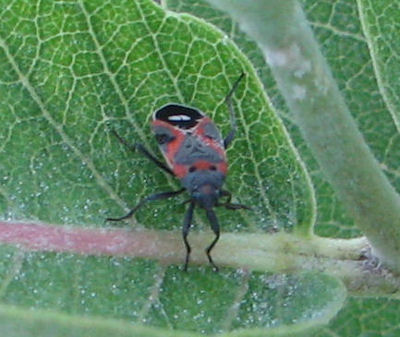
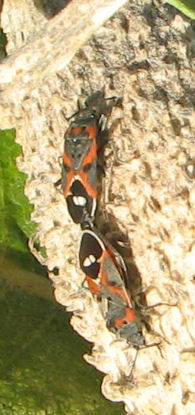
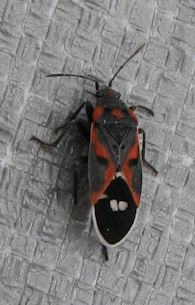
|
| This Small Milkweed Bug was found floating in my dog's water dish on 8 December 2016. Still alive.
| 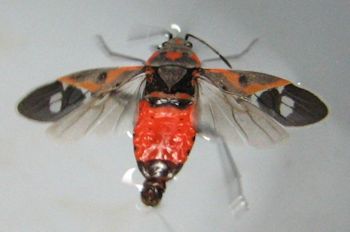

|
| Western Conifer Seed Bug - Leptoglossus occidentalis,
part of the genus of Leaf-footed bugs. This one was found on 15 October 2008 in
Colorado Springs, Colorado.
The second picture was taken on 29 September 2009 in Colorado Springs. It was about 2cm
in length.
Kingdom: Animalia
Phylum: Arthropoda
Class: Insecta
Order: Hemiptera
Family: Coreidae (leaffooted Bugs)
Genus: Leptoglossus
Species: occidentalis
| 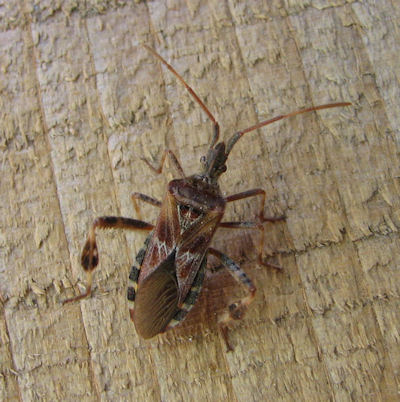
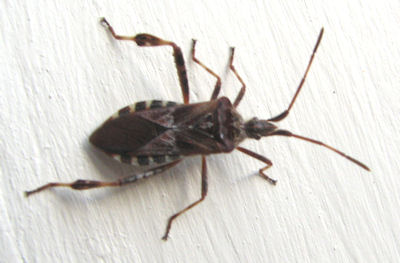
|
| This one is a close relative of the Western Conifer Seed Bug pictured
above. This one is a Leptoglossus clypealis, Western Leaf-footed bug,
same genus. It was found on 14 October 2012 in
Colorado Springs, Colorado.
Kingdom: Animalia
Phylum: Arthropoda
Class: Insecta
Order: Hemiptera
Family: Coreidae (leaffooted Bugs)
Genus: Leptoglossus
Species: clypealis
| 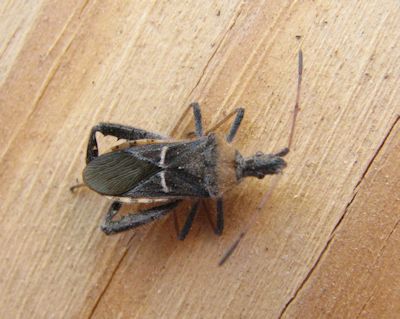
|
| Another Western Leaf-footed bug, found in Colorado Springs on 26 April 2014. It had a body length of 2cm.
| 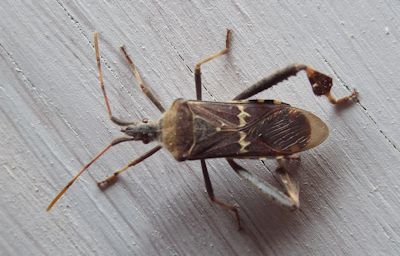
|
| This one is in the genus Catorhintha, one of the leaffooted Bugs.
Pictures taken on 22 May 2009, in El Paso Co., CO
Kingdom: Animalia
Phylum: Arthropoda
Class: Insecta
Order: Hemiptera
Suborder: Heteroptera
Infraorder: Pentatomomorpha
Superfamily: Coreoidea
Family: Coreidae (leaffooted bugs)
Genus: Catorhintha
Species: selector
| 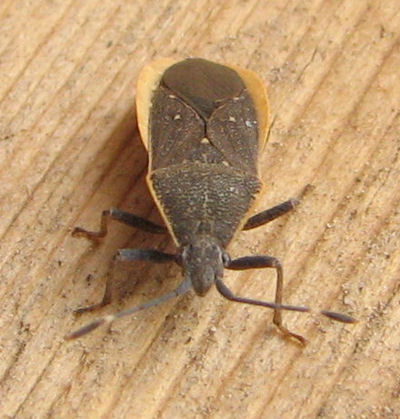

|
| Based on the body shape and size, this must be in the same family.
It appears to be a Catorhintha guttula, based on a good match to a photo in
www.BugGuide.com.
It was found in Colorado Springs, and photographed on 31 August 2009.
Length was about 1.2 cm.
Kingdom Animalia (Animals)
Phylum Arthropoda (Arthropods)
Class Insecta (Insects)
Order Hemiptera (True Bugs, Cicadas, Hoppers, Aphids and Allies)
Suborder Heteroptera (True Bugs)
Family Coreidae (Leaffooted Bugs)
Genus Catorhintha
Species guttala
| 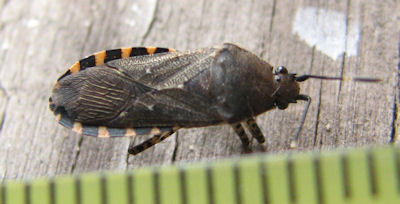
|
| This is a Cactus Coreid, Chelinidea vittiger, about 1.4 cm in length, found in Colorado Springs on 24 August 2009.
They eat Prickly Pear Cactus, which is plentiful in the Colorado Springs area.
Kingdom Animalia (Animals)
Phylum Arthropoda (Arthropods)
Class Insecta (Insects)
Order Hemiptera (True Bugs, Cicadas, Hoppers, Aphids and Allies)
Suborder Heteroptera (True Bugs)
Family Coreidae (Leaffooted Bugs)
Genus Chelinidea
Species vittiger (Cactus Coreid)
| 
|
| This is another Cactus Coreid, Chelinidea vittiger, found in Colorado Springs on 6 May 2014.
| 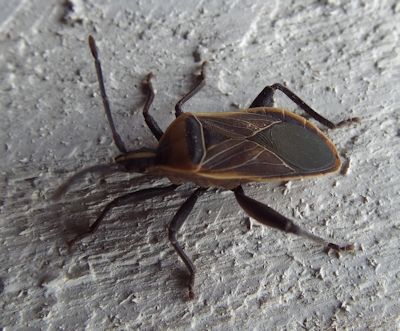
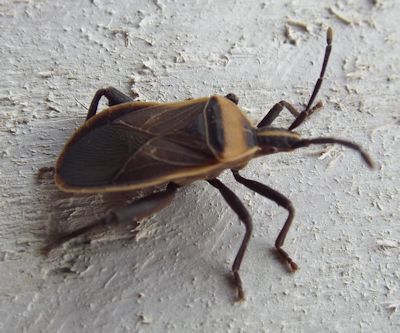
|
| This one has not been identified yet, but based on
appearance, it is probably related to some of those above.
Found in Colorado Springs, CO on 28 October 2011. It was 1.5 cm in
body length, larger than most bugs like this.
| 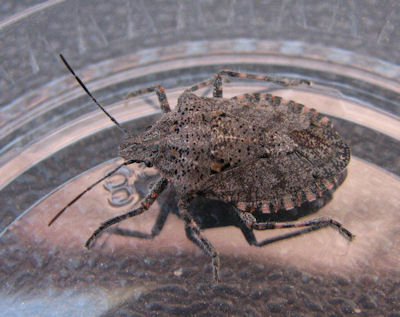
|
| This Assasin bug is called a Masked Hunter. They are predatory
and eat small arthropods. They can give a nasty bite to humans if
they are handled.
It was found on 28 July 2011 in Colorado Springs, on the carpet
of my upstairs hallway. It was 1.7 cm in length.
Identification was made by the good folks at
bugguide.net/node/view/15740.
Kingdom: Animalia
Phylum: Arthropoda
Class: Insecta
Order: Hemiptera
Suborder: Heteroptera
Family: Reduviidae
Subfamily: Reduviinae
Genus: Reduvius
Species: R. personatus
| 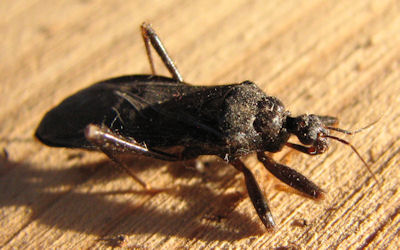
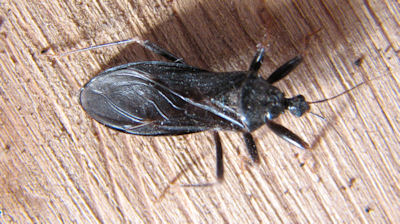
|
| Another one, this one about 1.3cm
body length. It appears to be the same species, just smaller.
It was found in my back yard in Colorado Springs on 6 August 2011.
| 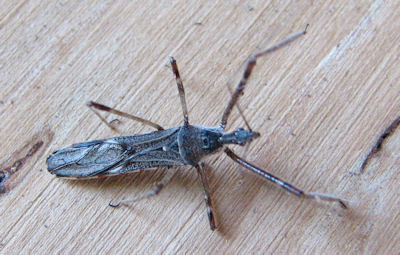
|
| Another one, this one about 1.7cm
body length.
It was found in my kitchen sink in Colorado Springs on 15 June 2013.
| 
|
| Another one, this one about 1.7cm
body length.
It was found in my garage, on a wall near a spider web on 9 June 2014.
| 
|
| Found on August 17, 2016 in my Marigold patch. The experts on www.Bugguide.net
identified it as one of the Jagged Ambush Bugs. They are predatory hunters, and often lie in wait on flowers. On the internet, you can find videos
of them killing Bumble Bees, that are much larger that these Ambush Bugs.
Not sure of species.
Kingdom: Animalia
Phylum: Arthropoda
Class: Insecta
Order: Hemiptera (True Bugs)
Family: Reduviidae (Assassin Bugs)
Subfamily: Phymatinae (Ambush Bugs)
Genus: Phumata (Jagged Ambush Bugs)
| 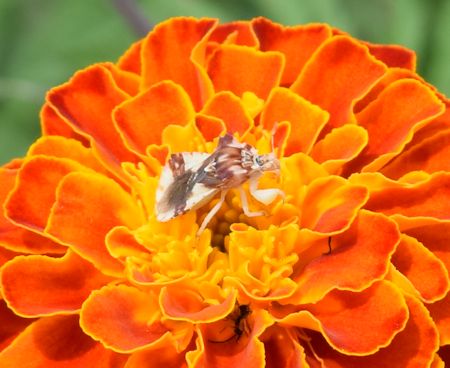
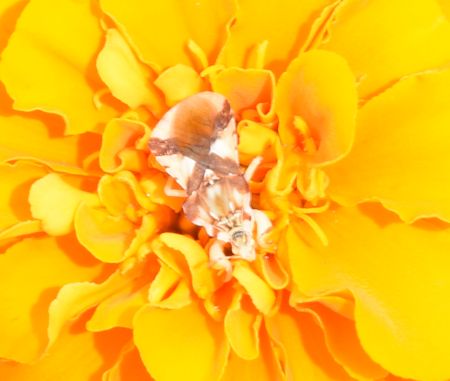
|
| On October 8, 2017, another one appeared on one of my Marigolds. Same Genus, maybe even same species.
It had a body length of about 6 or 7 mm.
| 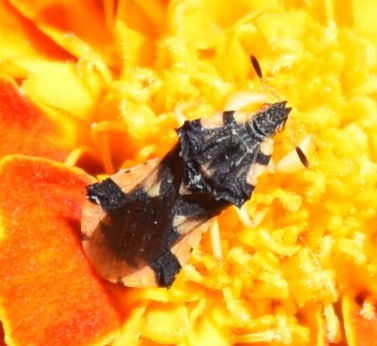
|
| Found on June 19, 2017 in my back yard. The experts on www.Bugguide.net
identified it as a nymph of one of the Assassin Bugs.
Kingdom: Animalia
Phylum: Arthropoda
Class: Insecta
Order: Hemiptera (True Bugs)
Family: Reduviidae (Assassin Bugs)
Genus: Velus (probably)
| 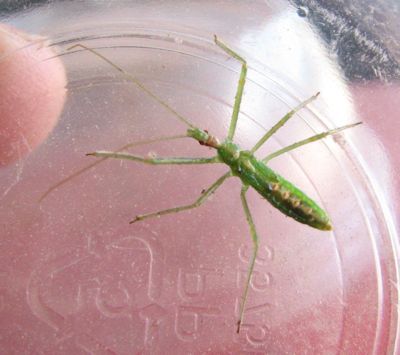
|
| This one is a nymph of one of the Ambush Bugs.
The identification was provided by John and Jane Balaban,
on www.Bugguide.net.
Found in Colorado Springs, CO on 19 July 2013. It was about 5mm in
body length.
Kingdom: Animalia
Phylum: Arthropoda
Class: Insecta
Order: Hemiptera
Family: Reduviidae (Assassin Bugs)
Subfamily: Phymatinae (Ambush Bugs)
| 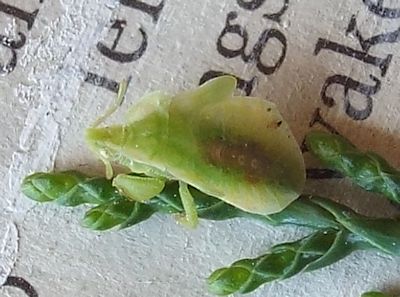

|
| Grasshopper.
There are about 11,000 species of grasshoppers within the Suborder Caelifera.
The first two pictures were taken on 25 August 2008 in Colorado Springs.
Identification has not been made for sure, but maybe it is a Two-striped Grasshopper, a very common variety.
If so, then the classification is:
Kingdom: Animalia
Phylum: Arthropoda
Subphylum: Uniramia
Class: Insecta
Order: Orthoptera
Suborder: Caelifera
Superfamily: Acridoidea
Family: Acrididae
Subfamily: Melanoplinae
Genus: Melanoplus
Species: M. bivittatus
The third picture, taken 31 August 2008 at the Fountain Creek Nature Center, is not identified yet, but it is
probably also a Two-striped Grasshopper.
| 
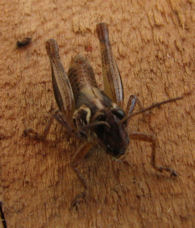
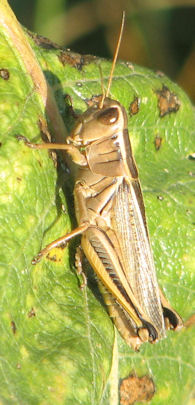
|
| This grasshopper was photographed by Alyssa Erickson in July 2009.
It seems to match the pictures of the fourth instar (next to last) nymph
of the Two-striped grasshopper above.
See http://bugguide.net/node/view/61138.
Insects such as this grasshopper start as eggs, and go through several stages
separated by a molt of their outer shell. Each stage is called an instar.
This grasshopper will have one more molt, to the fifth instar, then a final
molt after which it is an adult Two-striped grasshopper.
Notice in the picture that the wings are very small. With each instar, it
will develop more characteristics of the adult grasshopper.
| 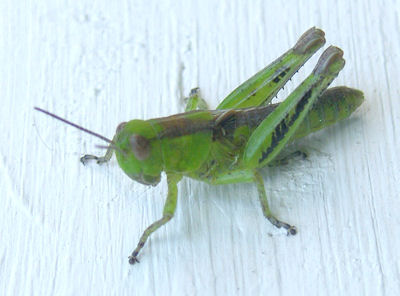
|
| This is probably also an early instar of the Two-striped grasshopper.
It was found on 23 July 2009 on a Sunflower plant in our flower garden.
I see no sign of any wings in the photo, but there are two dark spots where
the wings will appear during later stages.
| 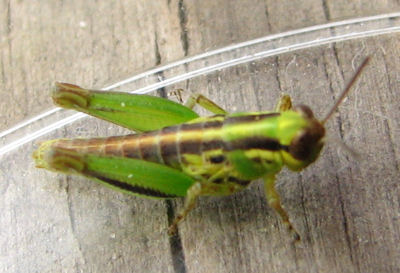
|
| Maybe this is a grasshopper in the genus Schistocerca. There are about
50 species. It was found in Colorado Springs, CO on 19 July 2009. It is 5 cm long,
and it makes a lot of noise when it flies.
Kingdom: Animalia
Phylum: Arthropoda
Class: Insecta
Order: Orthoptera
Suborder: Caelifera
Family: Acrididae
Genus: Schistocerca
| 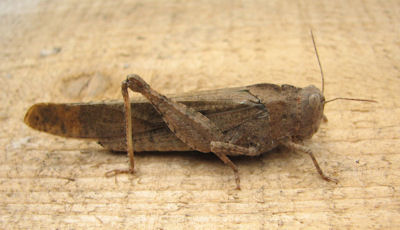
|
| This one was found on 13 April 2010. It probably
spent the winter as an adult, and is coming out of hibernation now.
It is about 1 inch in length. Identification has not been made yet.
| 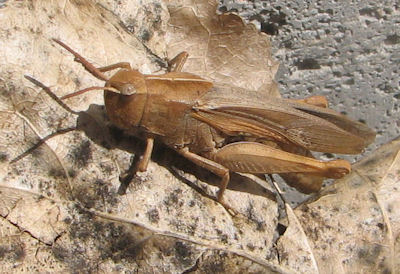
|
| Another early riser, this one was found on 2 April 2011. It probably
spent the winter as an adult, and is coming out of hibernation now.
It was 2.5 cm in body length. Identification has not been made yet.
| 
|
| This appears to be a grasshopper nymph, due to the
miniature wings. After the next change, it will probably be an adult.
Found on 21 October 2011 in Colorado Springs. At this time of year,
it will probably not have time for the next change.
| 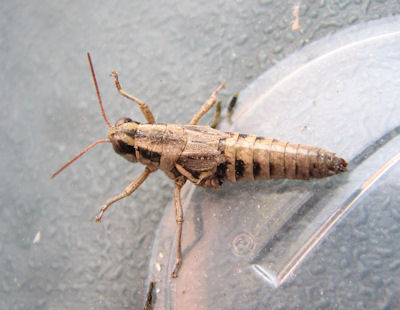

|
| This grasshopper might be one called the migratory grasshopper,
but I am not 100% sure of that. Found and photographed in Colorado Springs on 30 August 2012.
It is a large grasshopper, 5cm body length.
Kingdom: Animalia
Phylum: Arthropoda
Class: Insecta
Order: Orthoptera
Suborder: Caelifera
Superfamily: Acridoidea
Family: Acrididae
Subfamily: Melanoplinae
Genus: Melanoplus (Spur-throated)
Species: Sanguinipes (Migratory)
| 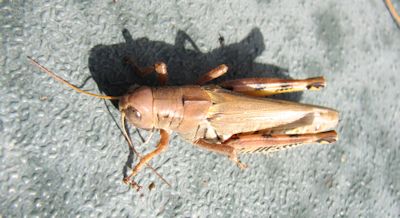

|
